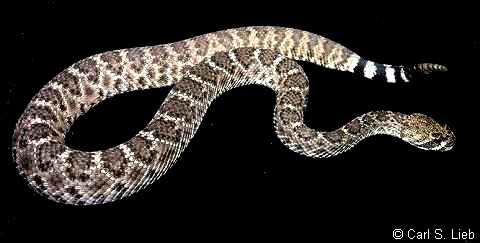

The question, "What is a species?" plagues biologists. The difficulty in part is that organisms differ so much that a definition for one group often won't work well for another group. The Biological Species Concept is based on reproductive isolation. Members of the same species can interbreed freely with each other but cannot with members of other species. This works reasonably well for organisms that rely on males and females for reproduction.
However, many organisms don't require separate males and females,
reproducing themselves by such methods as fragmentation, self-fertilization, or eggs
developing without fertilization. Often, we recognize species in these groups by the
so-called Morphological Species Concept. Individuals descended from the same ancestor
and forming a cluster of similar-appearing individuals that is separated from other
such clusters by a similarity gap are considered to make up a species. Locally, then,
the all-female New Mexican Whiptail lizard is a morphological species, while such
creatures as the Western Diamondback Rattlesnake is a biological species. Simple,
right? Then why the 25 or so different concepts that are out there for
consideration?

Contributor: Arthur H. Harris, Laboratory for Environmental Biology, Centennial Museum, University of Texas at El Paso.
Desert Diary is a joint production of the Centennial Museum and KTEP National Public Radio at the University of Texas at El Paso.

Western Diamondback (Crotalus atrox). Photograph by Carl S. Lieb.
Coyne, J. A., and H. A. Orr. 2004. Speciation. Sinauer Associates, Inc., Sunderland, MD. 543 pp.